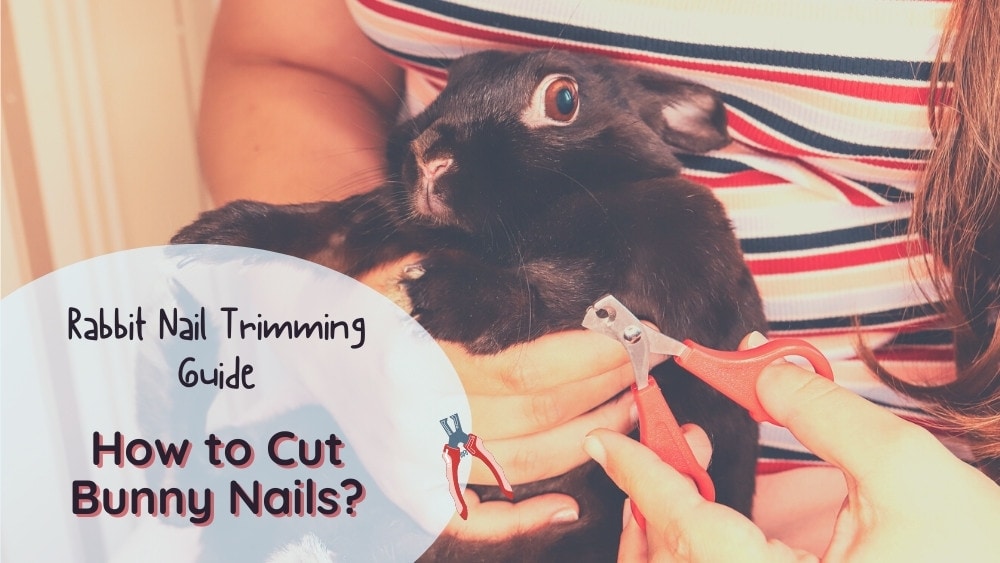In the wild, rabbits’ nails wear down naturally as they run around on rough ground and dig their burrows. Domestic rabbits don’t perform these activities, so it’s our job as owners to ensure their nails stay at a suitable length.
If your bunny’s nails get too long, they can strain your rabbit’s feet. This can cause their nails and toes can break. They can also hurt you accidentally!
Regular rabbit nail trimming keeps your bunny comfortable, happy, and healthy. If you’ve never done it before, cutting your bunny’s nails can feel a bit worrying but don’t panic; once you get the hang of it, you’ll be fine! We’ll go over all you need to know to cut your rabbit’s nails so you’ll be a pro in no time.
How to Cut Bunny Nails
First, look for the quick, which is the vein inside your rabbit’s nail. You need to find this, so you don’t clip it. Then carefully restrain your rabbit and use nail clippers to cut the end of the nail. Do this with each nail, giving your bunny breaks when needed.
The Basics
Anatomy of Your Rabbit’s Nails
Rabbit’s nails are tough because in the wild they use them to dig their burrows.
Bunnies have 18 toes and toenails: five on their front feet and four on their back feet. The fifth nail on the front feet is known as a dew claw. It sits higher up on the foot than the other nails and on the inside of their leg. It’s sort of like their thumbnail, although they can’t use their ‘thumbs’ like people can!
Rabbits have a vein inside their nails known as a quick. With regular nail trimming, the quick should stay relatively short and close to your rabbit’s toe.
It’s essential to avoid the quick when you’re cutting your rabbit’s nails. Cutting the quick can be painful for them and bleed quite a bit.
Do Rabbits Have Claws?
Technically, rabbits’ nails are claws, although not in the same way as cats’ claws. Cats’ claws are very functional and help to perform daily activities. Rabbit’s nails don’t have nerves except in the quick and don’t retract like cats’ claws.
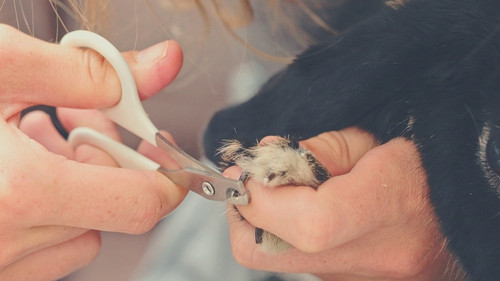
How Long Should a Rabbit’s Nails Be?
There’s no one perfect length for rabbits’ nails. Instead, you can keep an eye on how far they extend from your rabbit’s foot and how your rabbit is walking. You’ll get used to the length that works best for your bunny.

As a rough guide, if the nails extend well past the fur on your rabbit’s feet, it’s probably time to cut them. If the nails begin to curl under their feet or your rabbit can’t place their feet properly on the floor, it means their nails are too long.
How Often Should You Trim a Rabbit’s Nails?
There’s no one-size-fits-all rule regarding how often you should trim your bunny’s nails. Some rabbits’ nails will grow quicker than others. Some will wear down more quickly if rabbits run around on rough surfaces or are allowed to dig regularly.
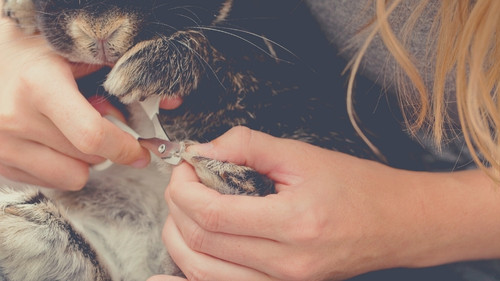
I’d recommend checking your rabbit’s nails at least once a month to see if they need a trim. We used to trim my bunny’s nails every four to six weeks.
Can You Declaw a Rabbit?
While it’s possible to declaw a rabbit, you should not do it. It’s extremely painful for your rabbit and is unnecessary. It can also lead to mobility issues and prevent them from performing natural behaviors such as digging, grooming themselves, and moving around.
Where Can You Get Your Rabbit’s Nails Clipped?
If you’re too nervous to clip your rabbit’s nails or you’ve tried and you’re struggling, don’t panic! You can take your rabbit to a vet to get its nails clipped if need be. In some areas, you may be able to take them to a groomer who accepts small animals.

How to Keep Your Rabbit’s Nails Short Without Cutting
There are a few ways you can help your rabbit to keep its nails naturally short. This should help reduce how often you need to trim their nails, but you’ll probably still need to clip them now and then.
Rough Surfaces
Allowing your rabbit to run around regularly on various surfaces can help to wear down their nails. Some good options are hardwood flooring, rough rugs or mats, and even stone flooring if you have it. You can also let them run around outside if you have a garden or yard.
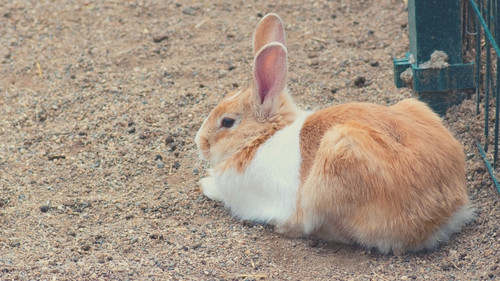
Digging Areas
Rabbits love to dig! It’s a natural behavior for them and is great enrichment, and helps them to wear down their nails. You could provide a digging area in your garden or recreate one inside. You can use a sandbox or box of dirt indoors, but remember, they will probably make a mess.
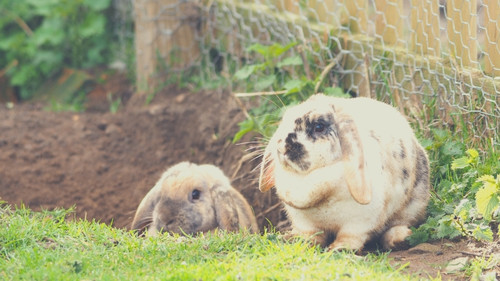
Other alternatives include giving them newspapers to dig at or a box full of hay. We would cover our living room floor in old newspapers and let our rabbit dig to his heart’s content. He loved it!
Scratchers
You can provide some surfaces for your bunny to scratch at. Cat scratchers, especially cardboard-based ones, can work well. Just ensure they don’t have any catnip in them!
You can also use rough cardboard. Some people even use sandpaper but keep an eye on your bunny if you do this to make sure they don’t hurt their feet.
What You’ll Need To Trim Rabbit Nails
You’ll need to gather a few supplies to ensure you’re prepared before tackling your rabbit’s nails. I advise having the following on hand:
- Small animal nail clippers: You can buy suitable nail clippers online and from most pet shops. You can choose from a scissor-shaped type or a guillotine type. Both work well, but I’ve always found the scissor type easier to work with, and I feel they offer more control.
- Flashlight: If your rabbit has dark nails, have a flashlight on hand. Placing it under or to the side of the nail allows you to see the quick.
- A towel or blanket: If you have a rabbit who is aggressive or moves around a lot while you’re trying to clip their nails, you can wrap them up in a blanket or towel. It helps to calm them and makes your job easier. You can take one paw out at a time to trim their nails.
- Blood-stopping powder: Just in case you cut the quick, having blood-stopping powder on hand can help you quickly stop the bleeding. You can buy styptic powder, or you can use cornstarch or flour.
- Treats: Being handled and getting their nails trimmed can be stressful for rabbits. Offering them treats during and afterward helps them to feel a bit more positive about the experience.
Can You Use Human Nail Clippers On Rabbits?
You should never use human nail clippers or normal scissors on your rabbit’s nails. They’re not the right shape and don’t give you the control you need. You’re far more likely to cut the quick or hurt your bunny.
You can also damage their nails using human clippers, which is the last thing you want.
Clipping Bunny Nails: Step By Step
You must stay calm when you’re ready to start clipping your bunny’s nails. Try not to panic, even if they are frightened. If you are relaxed and act confident (even if you don’t feel it) they’re likely to pick up on that. Talk to your rabbit in a low, reassuring voice throughout the process.
You don’t have to clip every nail in the same session. If you or your bunny are stressed, take some breaks to let you both calm down. The steps below will guide you through the nail-clipping process.
1. Gather Your Supplies
Have the supplies we discussed earlier all gathered together and within arm’s reach. That way, you’re fully prepared and don’t have to stop to search for something you need.
2. Restrain Your Rabbit
With Another Person
Now it’s time to pick up your rabbit and restrain them. This is far easier if you have someone else around to help you. Ask the person assisting you to hold your rabbit firmly with its paws facing outwards so you can reach its nails. They might want to sit down while they’re doing this.
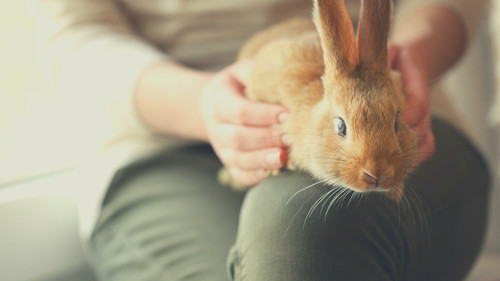
If your rabbit isn’t comfortable being handled, you can have the other person sit them on a raised surface like a table and hold them still. Rabbits usually prefer to have their feet on a solid surface, as being held off the ground is a vulnerable position for them. If your bunny is still wriggling or showing aggressive behavior, you can wrap them in a towel or blanket.
On Your Own
If you’re on your own, trimming your rabbit’s nails is much harder, but it is possible! It just takes more time to get used to how to hold your bunny and clip the nails at the same time. In my experience, putting your rabbit on a table is best. I’d advise putting down a towel that’s easy for your rabbit to grip onto so they don’t slip.
Place your rabbit at the table’s edge and wrap one arm around them. Use this arm to press them against your side, so they’re not moving around.
This position also helps them to feel more secure. You can use your hand of the same arm to hold out your rabbit’s paw and your free hand to operate the clippers.
To reach their back feet, you can turn them around and do the same. Alternatively, you can position them so they’re resting on their back feet with their body upright against your body.
If your rabbit is calm, you might find sitting with them on your lap easier, but you need to make sure they aren’t going to jump down suddenly.
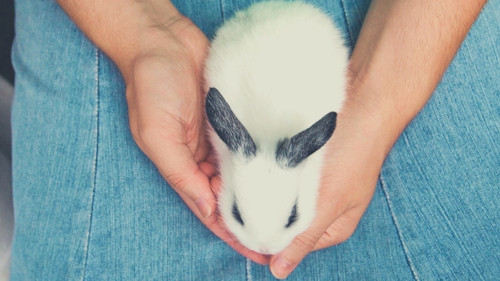
3. Find The Quick
Next, you need to get hold of one of your rabbit’s nails and examine it to find the quick. If your bunny has light nails, you’ll be able to see the quick quite clearly. If they have darker nails, it can be a bit trickier.
You can hold a flashlight under the nail to help you see the quick.
4. Place Clippers On Nail and Apply Gentle Pressure
Get a firm hold of the clippers and place them on your rabbit’s nail where you want to cut. Apply some gentle pressure with the clippers but don’t push all the way down yet.
If your rabbit reacts as though they’re in pain, you’re likely too close to the quick, so you can stop and move the clippers further down the nail. If they don’t react much, you can go ahead and cut the nail.
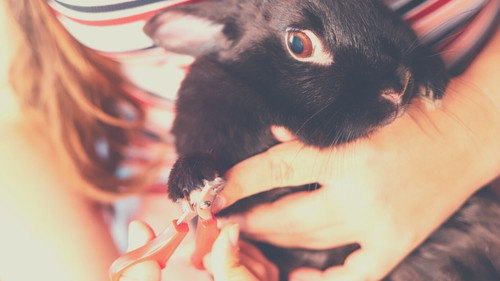
5. Clip The Front Nails
Now you can clip the nails on the front feet, repeating steps three and four as you go. The dew claw can be a bit more tricky, so don’t worry if this takes some repositioning and adjustment. You’ll get the hang of it!
6. Clip The Back Nails
Reposition your bunny and follow the same steps to clip the back nails. You might need to adjust a few times to get the correct position and angle. You might not need to cut as much off the back nails, as they tend to get worn down quite well with exercise.
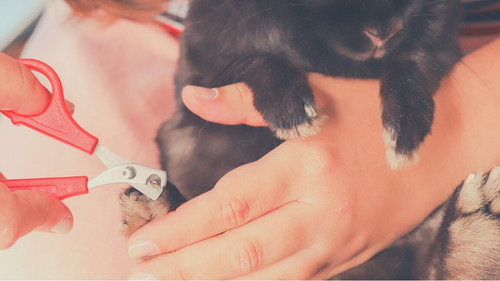
7. Check Each Toe
Once you’ve finished, I recommend going back and double-checking each toe. Check there’s no bleeding, and ensure you’ve taken as much off the nail as you want.
8. Offer Treats
When you’re done, give your bunny some of its favorite treats to let them know they’ve done a good job. Providing positive reinforcement helps them to associate the nail-cutting process with good things!
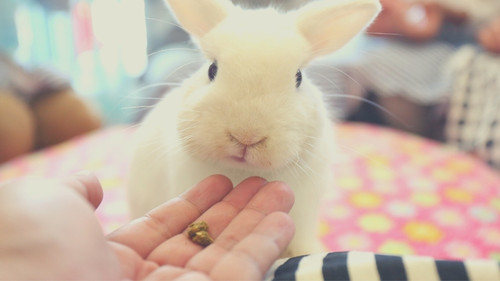
9. Spend Some Time With Your Bunny
After it’s over, your rabbit might be pretty mad at you. Don’t worry; this is normal! Give them a little while to cool down and then go and spend some time with them. I like to do this after around 10 minutes. Let them come to you and offer more treats so that you can reinforce the trust between you.
Solving Problems
Rabbit Nail Bleeding
If you catch the quick on any of the nails, try not to panic! I know it can be quite alarming to see blood coming from your beloved pet, but that’s what your blood-stopping powder is for. Dip the nail in the powder, and the blood will soon stop flowing.
If this happens, give your rabbit a break so you and your bunny can calm down. Try not to be hard on yourself: it happens to the best of us! Your rabbit’s nail should grow back quickly, and they won’t be in pain for long.
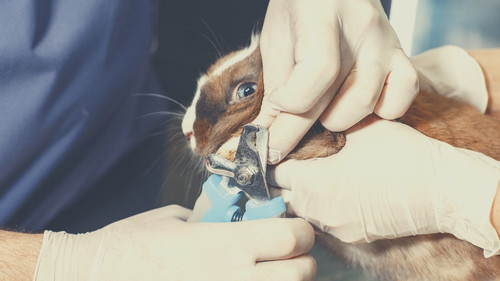
Nail Injury
It’s rare, but sometimes a rabbit’s nail can come off. It may be ripped off or injured if they struggle a lot during the nail-clipping process. In this case, stop the bleeding with your blood-stopping powder.
If it’s a mild injury, keep an eye on it over the next few days to make sure it’s healing well. I’d recommend spraying it with small animal antiseptic spray regularly to keep it clean and free of infection. If the wound is more severe or you’re unsure, take your bunny to the vet to get checked out.
Keep an eye out for signs of infection, such as redness, swelling, discharge, or a foul odor. If you notice any of this, take your bunny straight to the vet for treatment.
Overgrown Rabbit Nails
If you’ve rescued your rabbit or for any reason haven’t clipped your rabbit’s nails regularly, it might have overgrown nails. As we mentioned earlier, this is painful for your rabbit and causes mobility issues.
If the nails are overgrown, the quick will likely grow longer than it should. Therefore, you’ll need to clip a minimal amount off just the ends of the nails every few days. Over time, this will help the quick to recede, and you’ll be able to get your bunny’s nails back to the proper length.
If the nails are very overgrown and curl under, take your rabbit to the vet for further guidance.
Conclusion
Trimming your rabbit’s nails regularly ensures they can comfortably run and play. Once you get the hang of it, clipping your bunny’s nails is a fairly straightforward process.
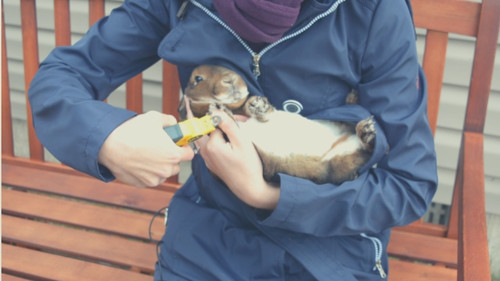
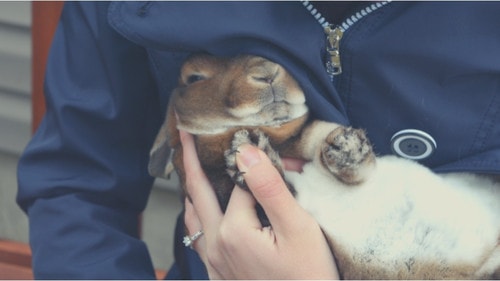

Did you find this guide helpful? We’d love you to share it if you enjoyed it!


